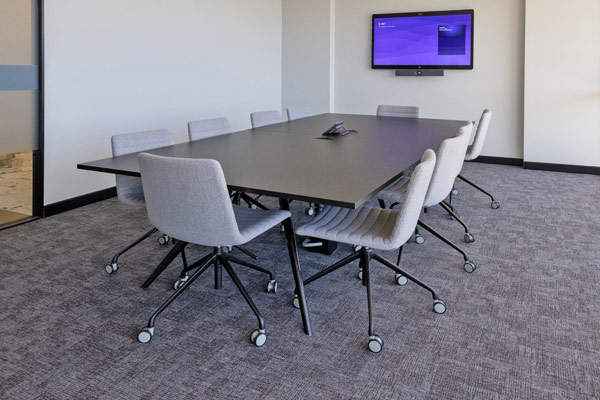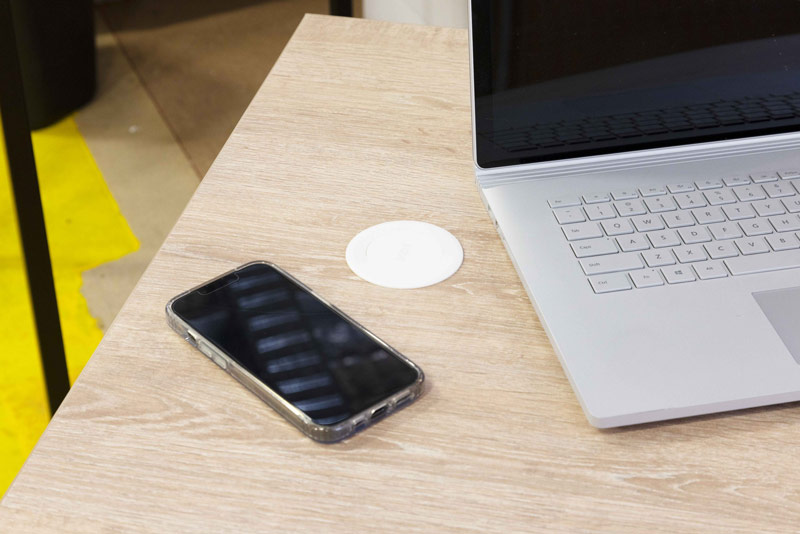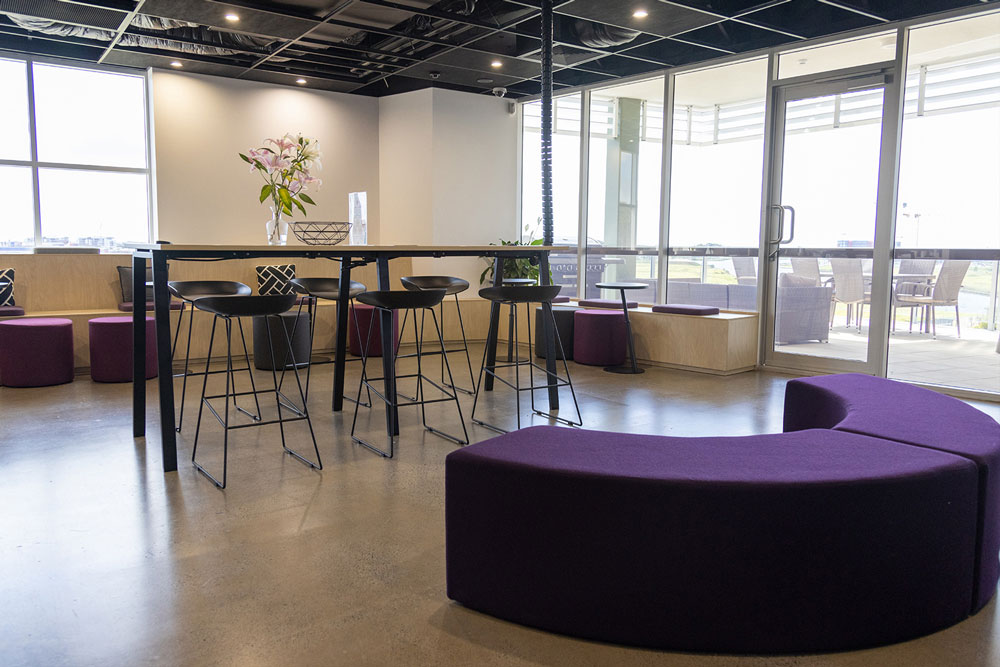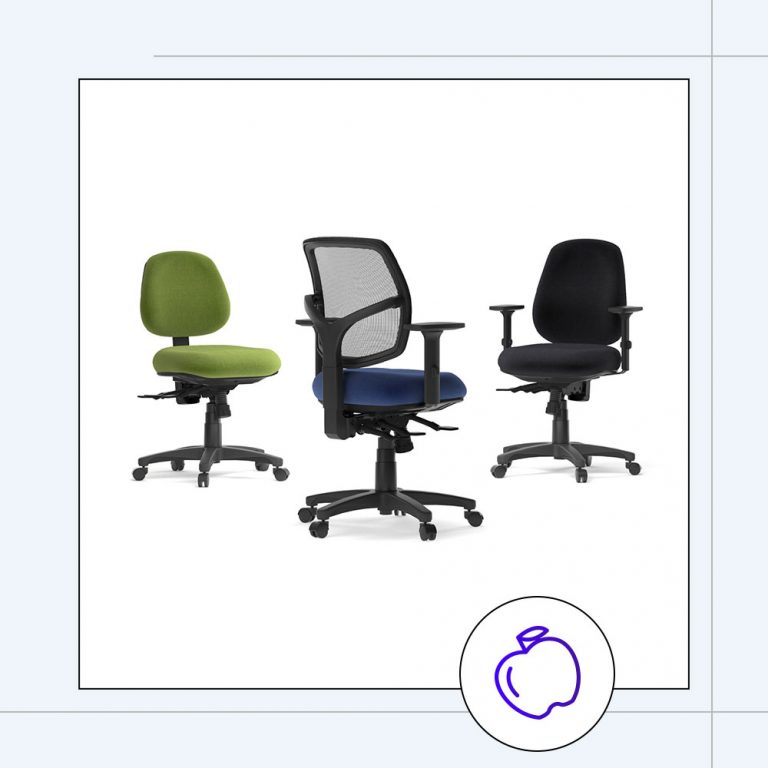It probably won’t come as much of a surprise that rows of cubicles, sterile white walls, grey desks, tiny office kitchenettes and instant coffee aren’t on your employee’s list of desirable office features. The things employees do want in the workplace are more likely to be found in a home, university, or café than in a corporate office.
Why? During a tumultuous couple of years of working at home, we had to adapt to new modes of working that proved (for most people) to benefit their productivity and well-being. Now that we’re back in the office, employers and employees are asking: “Did our corporate offices truly work for us, or was it just what we knew and came to expect?”
Employees now, and in the future, want spaces that mirror how they work best, not how they’re told they work best. With that in mind, we’ve compiled a list of the top five things that employees want from their workplaces in the future.
1. A hybrid working model available to all employees
Employees want hybrid to stay, and employers need to take notice. A study by McKinsey found that 52% of US employees want a hybrid model, while 11% want to work remotely full-time, particularly if they are parents of young children. Furthermore, 42% of employees in Australia are likely or very likely to switch jobs if they are forced to return to the office full-time.
While teleconferencing software such as Zoom and live collaborative cloud computing software make implementing a hybrid working model easy from a technological standpoint, there are a few logistical and physical considerations that need good planning.
Firstly, think carefully about who needs to be in and when (e.g. for all-hands meetings, events or collaborative working sessions) to help you plan desk space and hot-desking options, and work with employees to develop a schedule that ensures no one is left sitting with a computer on their lap in reception.
Secondly, take the lead and communicate your flexible working policy and expectations clearly and early. According to a 2021 study by McKinsey, communicating openly about working within a hybrid model reduces stress, increases morale and can even boost employee well-being.
Finally, strike a balance between providing employees with what they can and can’t get at home – some are coming in for a quiet place to work away from family, while others miss the human connection. Enhance your office with home comforts like interiors decorated with natural fibres and colours, a mix of private and collaborative working areas, sofas, and a good kitchen where they can prepare their favourite food. You can also encourage the collaboration and conversations they miss out on at home with community spaces, casual drop-in lunches, and whole team meetings on days when most people are in.

2. An evolving office environment that thinks outside the cubicle
Cubicles, private offices, or rows of desks in an open-plan office aren’t cutting it anymore for most employees (there are exceptions like call centres and those in confidential lines of work).
Employees want offices to reflect the working styles they’ve adopted over the last few years and those yet to come. The office of the future features large spaces divided into zones with pods for quiet working, collaboration and large meetings, and smaller group work. Leaders work at desk spaces or shared tables with their team, taking private discussions in smaller sound-proof meeting rooms. Activity-based workspaces that suit the type of work being done (e.g., design, planning, and coding) are created and pulled down to suit project timelines.
The idea of working in ‘neighbourhoods’ is also influencing how we can design workplaces of the future. Rather than creating role-focussed team spaces like finance or marketing, industry or project-focussed teams of people with different roles and skill sets will be placed in neighbourhoods where they can share knowledge.
Some new workplace designs are embracing the concept of ‘resimercial’ which considers how we live and work in residential spaces and transferring those ideas to a commercial building. While working at home, we make ourselves comfortable in different spaces – the kitchen, lounge, closed office, outside table – and move around throughout the day. This can be transferred to offices by including lounge spaces, large communal tables, stand-up meeting areas and private desks to give employees options and allow them to work in different ways during the day.
Some particularly creative designs that embrace employee’s new needs and working styles include:
- Clive Wilkinson’s Superdesk – an enormous single, moulded desk structure that flows throughout an office, creating desk space and meeting areas for 175 people.
- LinkedIn’s open meeting spaces which sit alongside workspaces. They are comprised of movable sofas, chairs and monitors and resemble a hotel or luxury airport lounge.
- Google’s campsite which takes work outside the office to a purpose-built open-air tent on a lawn and unused carpark. While it embraces the outdoors, it doesn’t skimp on work essentials – it’s filled with tables, chairs and state-of-the-art video conferencing technology.
For a workplace that evolves to meet employee’s needs, it needs to be well-equipped with flexible furniture that can be reconfigured or even disassembled and reassembled easily, movable partitions and acoustic absorbers on walls and ceilings to reduce noise, and modular seating.

3. Easy access to technology
Technology is king and can make or ruin an employee’s day. Employees want office design and furniture to blend seamlessly with technology so that their teams can concentrate on doing their best work rather than hunting for cables and power points.
In practice, this means workplaces need to be equipped with:
- Charging pads, power points and cables in communal areas like lounges, cafes, meeting rooms and kitchens.
- Wi-Fi enabled connections between laptops and meeting room hardware like monitors and videoconferencing technology.
- Monitors with cameras embedded into movable partitions so that meetings can be set up in communal team areas or lounges.
- Access to online collaboration tools and whiteboarding software like Confluence, Miro or FigJam.
- Monitors on swivel arms that can be accessed or moved away when not in use.
Employers particularly want their organisations to understand that video conferencing is different to teleconferencing: a long table with a screen at one end doesn’t allow for good visibility or communication. This can be rectified with tiered or semi-circular seating, intelligent speakers, surround sound, and new formats for video-conference software that puts people at eye level. Good examples are Google and Microsoft’s redesigned meeting rooms for virtual collaboration which use multiple screens at eye height and circular seating designs to make virtual working feel more natural.
Designing offices of the future is less to do with the technology itself and more to do with how people interact with technology: employees want a variety of flexible spaces that have technology embedded into both the architecture and furniture in a way that is suited to the activities being undertaken.
*We offer additional perspectives and ideas about technology in our blog BFX Furniture’s top office design trends for 2023.

4. A greater focus on health and wellbeing
Employees want their offices of the future to go beyond ergonomic chairs and sit-stand desks to being spaces that reflect their personal routines and the practices they use to maintain their health and wellbeing at home. To that end, CBRE suggest 12 top priority areas for employee wellbeing: indoor air quality, acoustics, thermal comfort, natural lighting, materials, mindfulness, safety and preparedness, nourishment, water, social connectivity, workforce flexibility and active design.
We’ve explored what this looks like in practice in our blog BFX Furniture’s top office design trends for 2023.
Employees also want greater mental health support. The Black Dog Institute report that one in six people suffer from symptoms of mental ill health at work which affects their ability to function properly. According to Black Dog, mental ill health is the “leading cause of sickness absence and long-term work incapacity in Australia”. They believe that job design, team factors such as supportive colleagues and good management, an organisational culture of safety and support, good home-life balance can all contribute to mental health outcomes. Biophilic workplaces may also improve employee well-being.

5. A commitment to sustainability
Employees are demanding that their organisations show a greater commitment to sustainable practices. This has begun to influence who people will work for and their level of engagement. They feel that their job is more fulfilling when they are offered opportunities to make a positive environmental or social impact.
Sustainability is particularly high on the agenda for Millennial job seekers who are actively searching for, and screening out, organisations according to their environmental standards.
As we move towards becoming a more conscious society of consumers, a commitment to sustainability – whether through social justice initiative, or environmentally responsible office design, consumables and travel policies – implies that an employer who values the environment will care for its employees. And, according to research by the University of South Australia, this commitment may also help employees feel more comfortable about returning to the office full-time.
Offices of the future will prioritise sustainable and renewable materials, water and energy saving technology, composting and recycling facilities, and furniture and interior design which prioritises natural light and ventilation.*
*There is more information on environmental sustainability in the office in our blog BFX Furniture’s top office design trends for 2023.

How to make the transition
A complete office refurbishment and expensive large-scale initiatives aren’t necessary unless you have the budget and immediate need. The transition to an office of the future that addresses the things your employees really want can be made slowly and intentionally.
We recommend:
- Doing thorough research: find out what the latest trends are, how other organisations of a similar size and in a similar industry are changing their offices, policies and working models and any lessons they’ve learned.
- Get your employees involved: Sit down with them, ask them exactly what they want, need, like and don’t like, and get them involved in the design of any new office space and policies.
- Follow a proper change management process: making grand decisions and implementing them without consultation, communication or warning is a sure way to get it wrong. There will be resistance but by involving all teams and communicating early and regularly, you’re more likely to end up with a workplace that everyone is happy with.
- Start small and use what you’ve got: Rather than a major overhaul, plan out changes over a longer-time frame and start with small areas – perhaps the kitchen needs work to support health and wellbeing needs, or perhaps refurbishing meeting rooms to make virtual collaboration more natural is the priority. It could be as simple as improving employee’s comfort, focus and well-being by providing a sit-stand desks and a quality ergonomic chairs.
When creating the workplace of the future, thinking purely from a real-estate perspective or purely from an equipment perspective is unlikely to get you the results you want. Think about what your real outputs are, how people get there, and what their real, human needs are and then design.
BFX can work with you to create the workplace of the future
BFX stays abreast of how workplaces are evolving and create furniture that offers the flexibility and functionality that modern offices demand. Together with their technical knowledge, our team can recommend furniture and design schemes that meet your and your employee’s needs to create a workplace they love. Contact our team today













